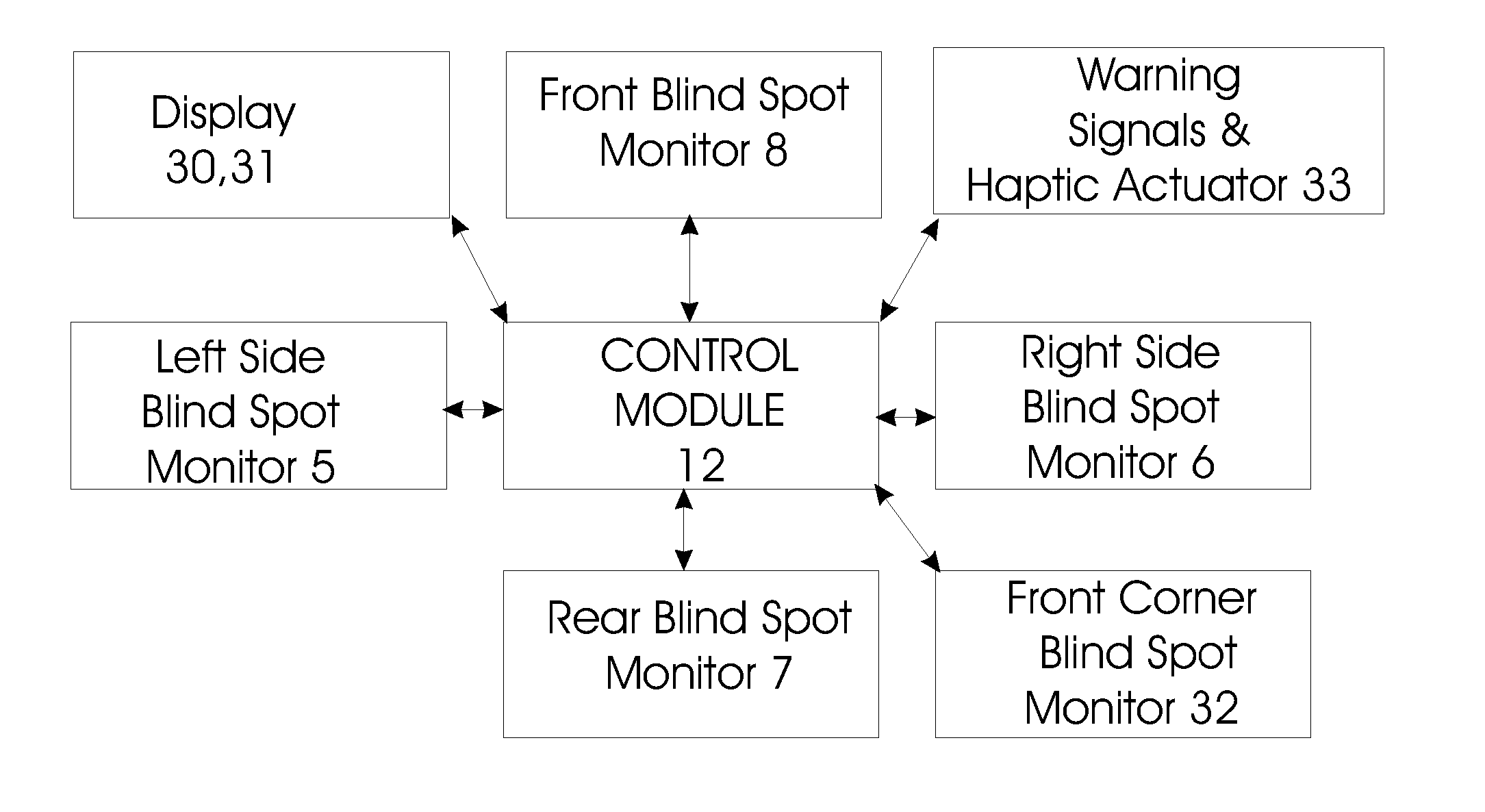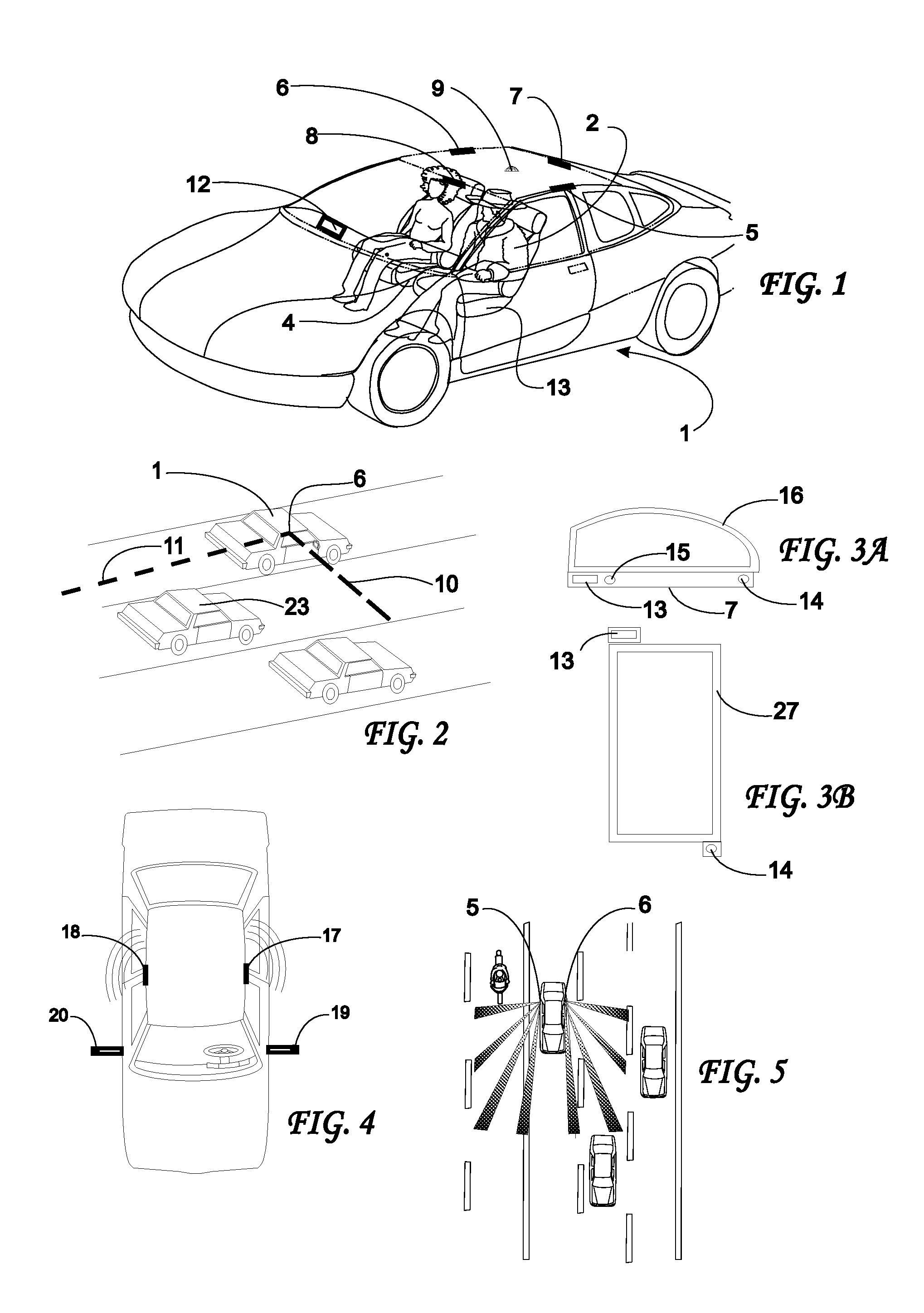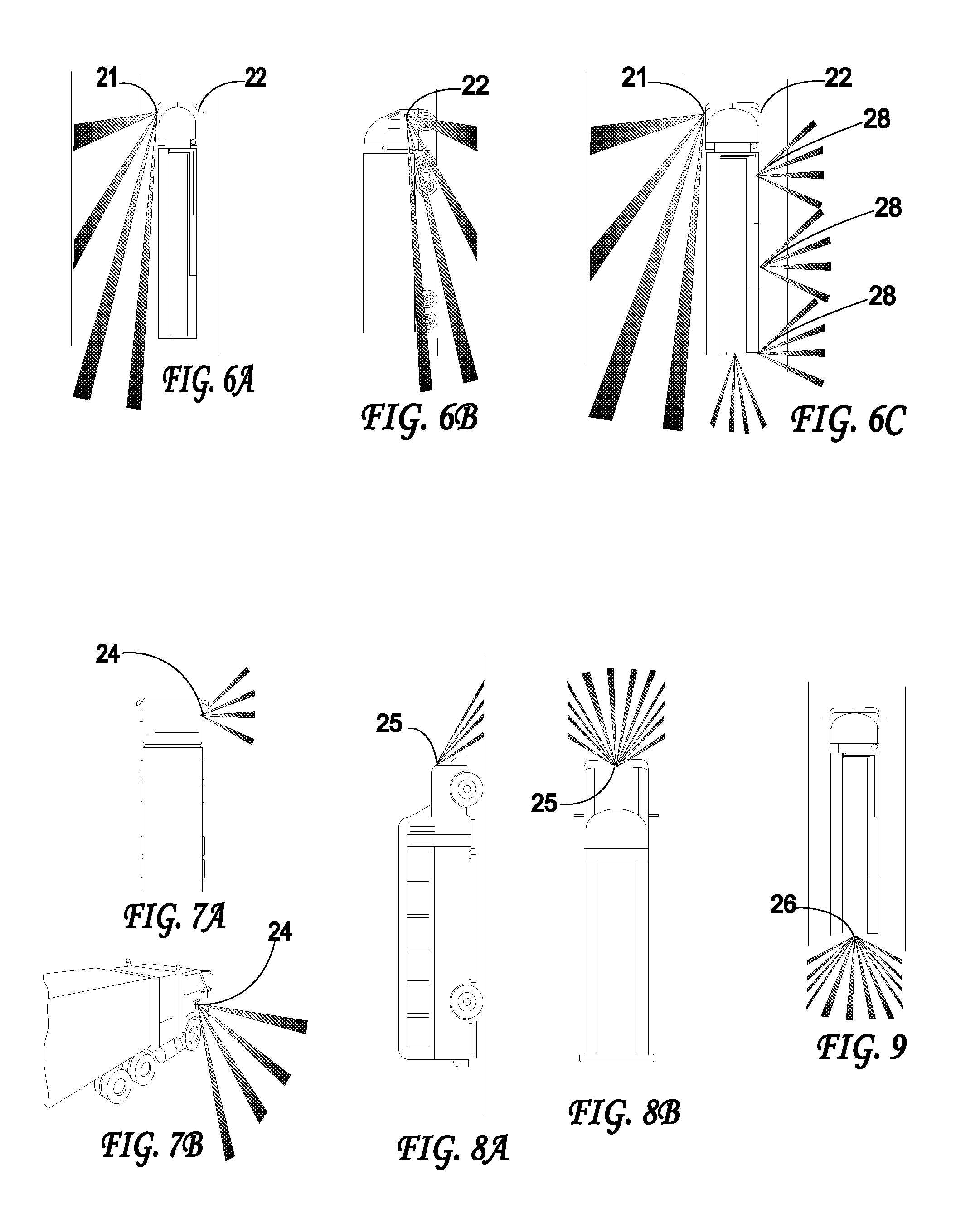Vehicular Component Control Methods Based on Blind Spot Monitoring
a control method and vehicle technology, applied in the field of collision avoidance systems and methods, can solve the problems of increasing the calculation errors, reducing the sensing accuracy, and only working with the sensor to compensate for the pitch of the vehicl
- Summary
- Abstract
- Description
- Claims
- Application Information
AI Technical Summary
Problems solved by technology
Method used
Image
Examples
Embodiment Construction
1. Exterior Monitoring
[0263] 1.1 General
[0264] Referring now to the drawings wherein the same reference numerals refer to like elements, a perspective semi-transparent view of an automobile is shown generally as 1 in FIG. 1. A driver 2 of the automobile sits on a front seat 4. Five transmitter and / or receiver assemblies 5, 6, 7, 8 and 9 are positioned at various places with views of the environment surrounding the vehicle. A processor such as control circuitry 12 is connected to the transmitter / receiver assemblies 5-9 by appropriate wires, not shown, or wirelessly and controls the transmission of waves or energy from the transmitter portion of the assemblies 5-9 and captures the return signals received by the receiver portion of the assemblies 5-9. Control circuitry 12 usually contains one or more analog to digital converters (ADCs) or frame grabbers, a microprocessor containing sufficient memory and appropriate software including pattern recognition algorithms, and other appropr...
PUM
 Login to View More
Login to View More Abstract
Description
Claims
Application Information
 Login to View More
Login to View More - R&D
- Intellectual Property
- Life Sciences
- Materials
- Tech Scout
- Unparalleled Data Quality
- Higher Quality Content
- 60% Fewer Hallucinations
Browse by: Latest US Patents, China's latest patents, Technical Efficacy Thesaurus, Application Domain, Technology Topic, Popular Technical Reports.
© 2025 PatSnap. All rights reserved.Legal|Privacy policy|Modern Slavery Act Transparency Statement|Sitemap|About US| Contact US: help@patsnap.com



